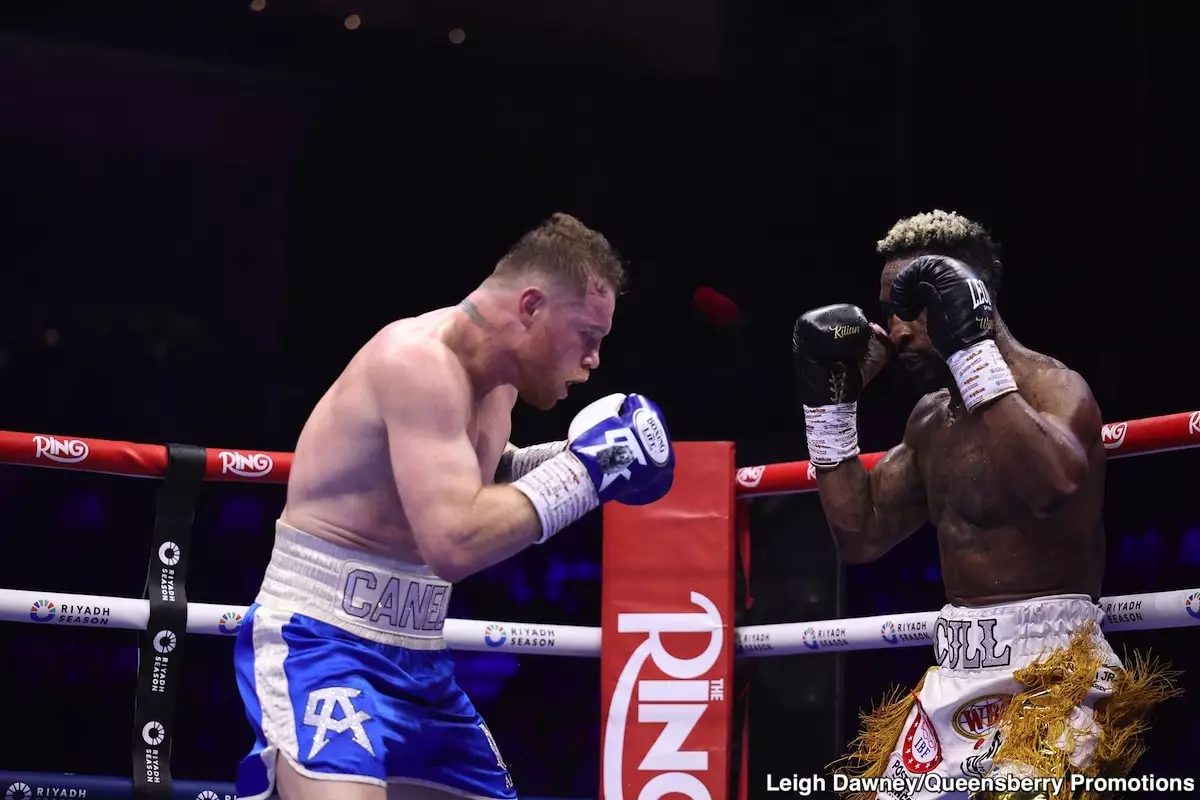When it comes to high-stakes boxing matches, few elements determine the outcome as conclusively as size, strength, and ring experience. The upcoming clash between Canelo Alvarez and Terence Crawford embodies this principle, with expert trainers and analysts emphasizing Alvarez’s physical dominance and seasoned adaptability. While Crawford remains an undefeated legend in the making, even he cannot easily bypass the significant advantages Alvarez wields—particularly as Alvarez has been competing at 168 pounds longer and more consistently. This disparity gives Canelo a strategic edge that transcends skill alone; it’s about physicality and the ability to impose one’s game plan.
Canelo’s years of experience at the top of the sport have honed his ability to conserve energy, adapt during fights, and deliver devastating power at critical moments. His recent fights, especially against opponents he could outbox or outmaneuver, mask his approaching vulnerability to more power-focused rivals. The fight with Crawford is a rare test of pure strength, where Alvarez’s size advantage could turn the tide, especially as Crawford moves up divisions without proper warm-up bouts. His shorter preparation window and lack of recent high-quality competition at 168 raise questions about his readiness to face an opponent with Alvarez’s explosive power and tactical intelligence.
What Age and Ring Rust Mean for Crawford’s Chances
Crawford, approaching 38, displays signs of aging that are hardly helpful going into a grueling bout against a physically superior opponent. The signs of wear are evident, and some insiders argue that a year of inactivity or age-related decline severely dampens his prospects. Historically, fighters who jump divisions without adequate preparation or a tune-up fight often underestimate the physical toll involved. Moving from 147 to 168 pounds is far from a seamless transition; it’s a leap that requires strategic timing and proper adjustment, neither of which Crawford seems to have had given his sparing schedule.
Further complicating his situation is his recent performance at 154, which revealed signs of diminished stamina and effectiveness. His narrow decision over Israil Madrimov was underwhelming, and it signaled that he might not be the unstoppable force he once was. Against a fighter like Alvarez, who maintains his physical prime and fights with deliberate calculated aggression, Crawford’s age and recent form could be decisive disadvantages. His approach needs to be flawless, but with limited preparation, that becomes increasingly unlikely.
Strategic Considerations and the Fight’s Stakes
Canelo Alvarez is not just fighting for a win; he’s fighting to secure his legacy. With a reported $100 million payday—a sum that ranks among the highest in boxing history—Alvarez is under immense pressure to perform. This financial incentive multiplies the stakes, forcing him to abandon more conservative tactics in favor of a relentless pursuit of victory. Alvarez’s previous bouts, often against less formidable opponents or fighters who lacked his strength, showcased his ability to control pace and conserve energy for decisive exchanges.
In this heightened scenario, Alvarez is expected to be more aggressive, risking more to secure a stoppage or dominate the rounds. His camp recognizes that Crawford’s youth and skill can’t be relied upon to offset his size and power. While Crawford is certainly crafty and capable of surprises, the psychological and physical toll these factors impose could overwhelm him. If Alvarez’s team deploys the right strategies—aiming to cut the ring, land heavy shots, and wear down Crawford—the fight might be over before the judges can decide it.
The Inevitability of Power in Heavyweight Battles
In the grand arena of boxing, power often trumps finesse, especially when the fighters are mismatched in size. Canelo Alvarez exemplifies this truth better than most. His muscular physique, combined with tactical intelligence, allows him to break down opponents who are less durable or smaller. Crawford’s move up in weight lacks the necessary preparation time, and the physical gap is poised to be a decisive factor.
Many analysts argue that Crawford’s best chance would have been a well-timed move at 168 with a warm-up fight under his belt. Without that, his offensive and defensive systems may not translate effectively against a bigger, more powerful Alvarez. The fact that Crawford has not fought since last August adds another layer of doubt regarding his readiness to absorb Alvarez’s bombs and respond effectively. Power has a way of distorting fights—once Alvarez lands cleanly, it could be curtains for Crawford.
The upcoming bout is more than just another boxing match; it’s a testament to how physical conditioning, experience, and strategic risk-taking can dictate a fighter’s legacy. Alvarez’s dominance is rooted in his ability to blend power with calculated finesse—an edge that many top fighters aspire to but few effectively harness. This fight, in many ways, will be a showcase of how size and strength continue to influence the greatest contests in boxing history.

